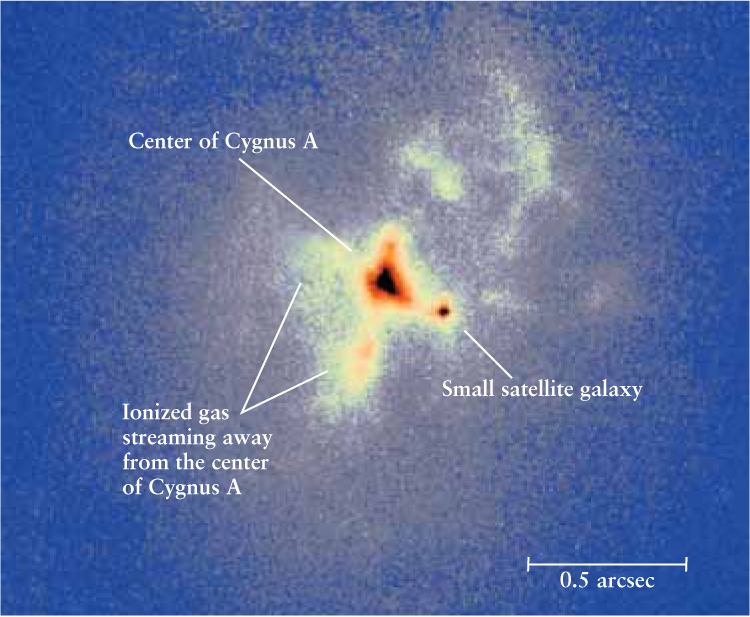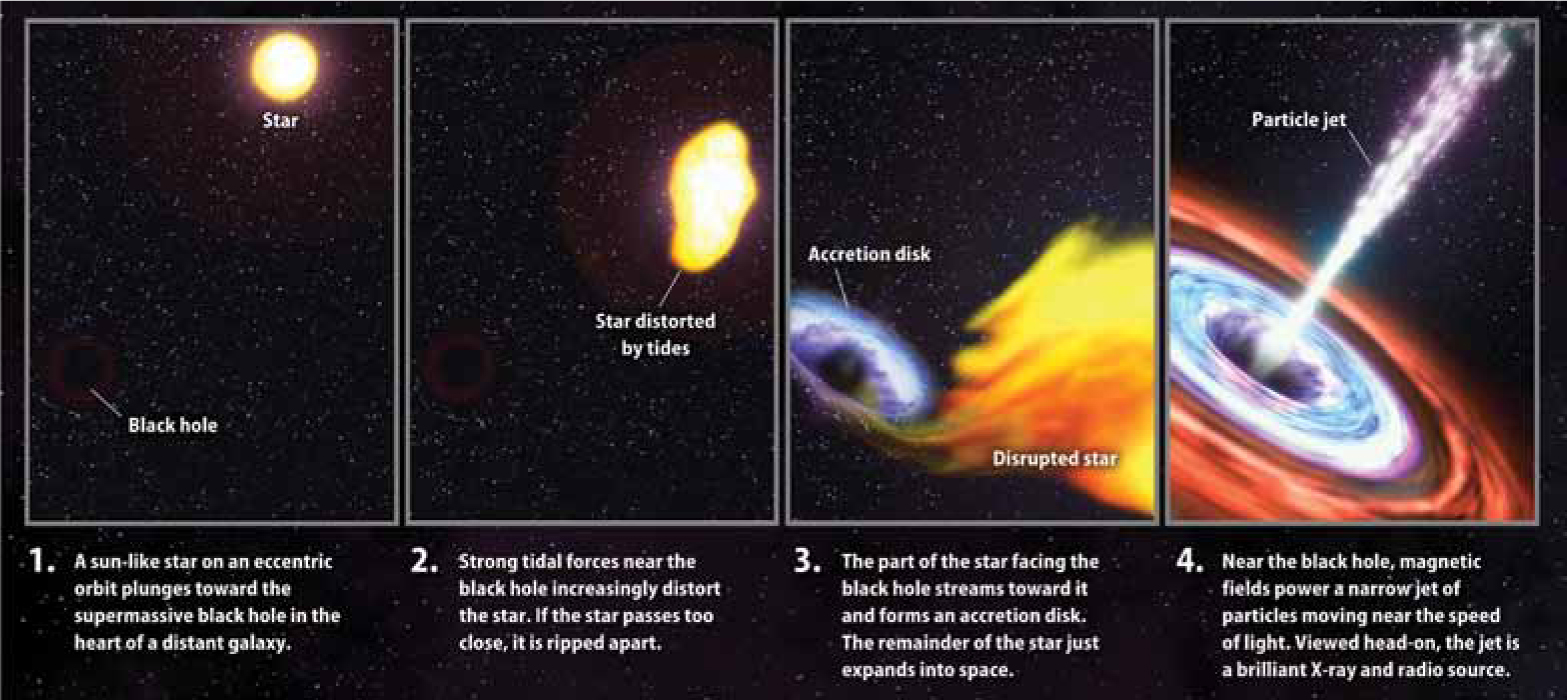24-5 The evolution of AGN
The accretion-disk idea can explain what happens when active galaxies collide or merge with other galaxies. Such collisions and mergers can transfer gas and dust from one galaxy to another, providing more “fuel” for a supermassive black hole. For example, the image in Figure 24-14 shows a close-up view of a supermassive black hole about to take in more “fuel” from a merger. Thus, it is not surprising that many of the most luminous active galaxies are also those that have recently undergone collisions, such as the radio galaxy Centaurus A shown in Figure 24-15.

Providing Fresh “Fuel” for a Supermassive Black Hole A small satellite galaxy has fallen into the central regions of the radio galaxy Cygnus A (see Figure 24-1). Its material may eventually accrete onto the supermassive black hole at Cygnus A’s very center. This false-color extreme close-up was made using adaptive optics, described in Section 6-3.

The accretion disk idea also helps to explain why there are no nearby quasars (see Figure 24-4). Over time, much of the available gas and dust surrounding a quasar passes into the accretion disk and then enters the black hole. Eventually, the central engine has less and less infalling matter to act as fuel, and the quasar becomes inactive. Since quasars started shining in the early universe (about 12 billion years ago), and they consumed their fuel rather quickly (in a few hundred million years), the only quasars visible today in our expanding universe are very far away.
Dead Quasars and Flares
When a quasar runs out of accreting fuel altogether and becomes inactive, some astronomers call the leftover supermassive black hole a dead quasar. The vast majority of galaxies, including our own Milky Way, appear to have supermassive black holes at their centers that are not presently active. Therefore, dead quasars seem to be in almost all luminous galaxies, so most galaxies once led much more dramatic lives as quasars when they were young.
Is there a way to test the idea that most galaxies harbor a supermassive black hole? Yes. Fortunately, there is a chance that a dead quasar can light up once again, even if only briefly. If a star wanders too close to the supermassive black hole, tidal forces (which act to stretch the star) can tear the star apart and pull in some of its matter. This newly acquired stellar gas acts as temporary accretion fuel for the otherwise dormant black hole. Models of this process suggest that it might occur about once every 10,000 years in a typical galaxy. As the star’s matter is accreted and is consumed by the black hole over a period of a year or so, it can shine brightly and is called a dead quasar flare.
Very few events provide convincing evidence for a flare. After all, there are other objects that can give a burst of light. One case for a flare came in March 2011, when a burst of X-rays (named Swift J1644+57) was observed at the center of a galaxy. This flare lasted only two days, but was observed from beginning to end. The event was much brighter and shorter than expected for a typical flare, and astronomers think the emission came from temporarily formed jets, as opposed to an accretion disk (Figure 24-16).

Much is still unknown about quasars. How do they form? Does their visible light really come from an accretion disk? Why do some AGN have strong radio emission, while others do not? What happens if a star wanders too close to a dead quasar—does its captured gas form an accretion disk or jets? All of these questions are part of ongoing research in the field of active galaxies.
CONCEPT CHECK 24-9
Could our own Milky Way Galaxy have once hosted a quasar? If so, are we likely to witness a dead quasar flare from the center of our Milky Way Galaxy?
Yes, the supermassive black hole at our Galaxy’s center is probably a dead quasar. However, since a supermassive black hole is expected to capture a star and produce a dead quasar flare only about once every 10,000 years, we are unlikely to witness this event.